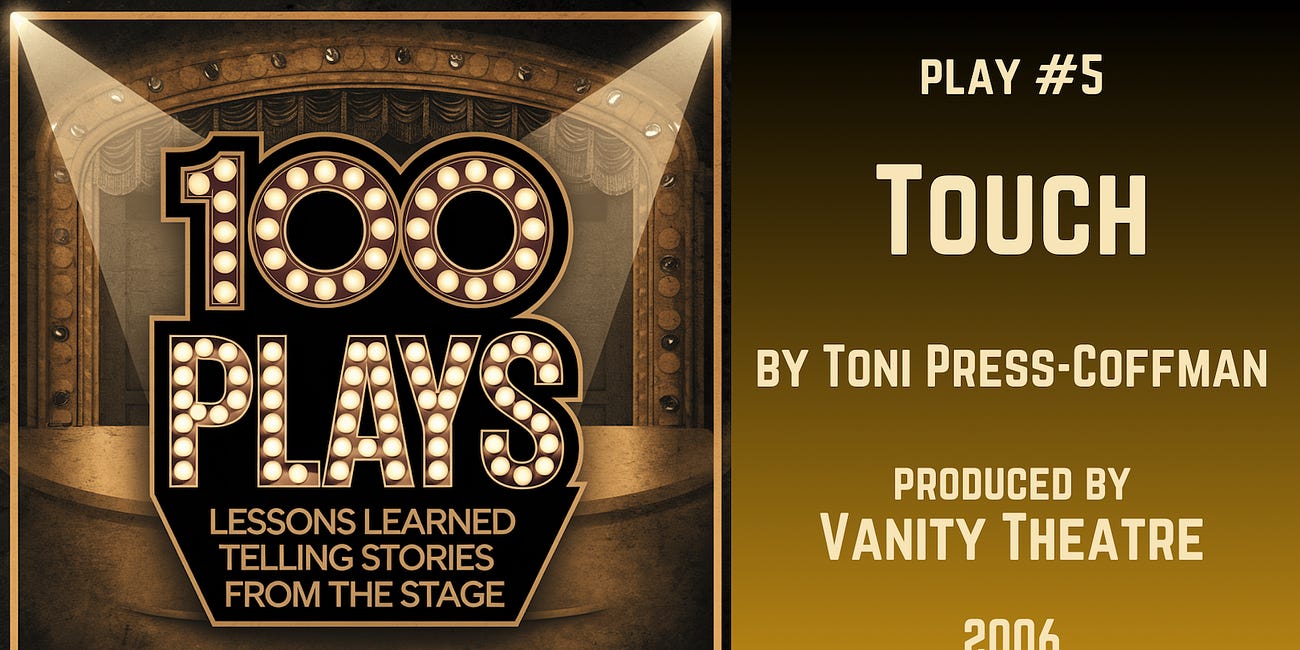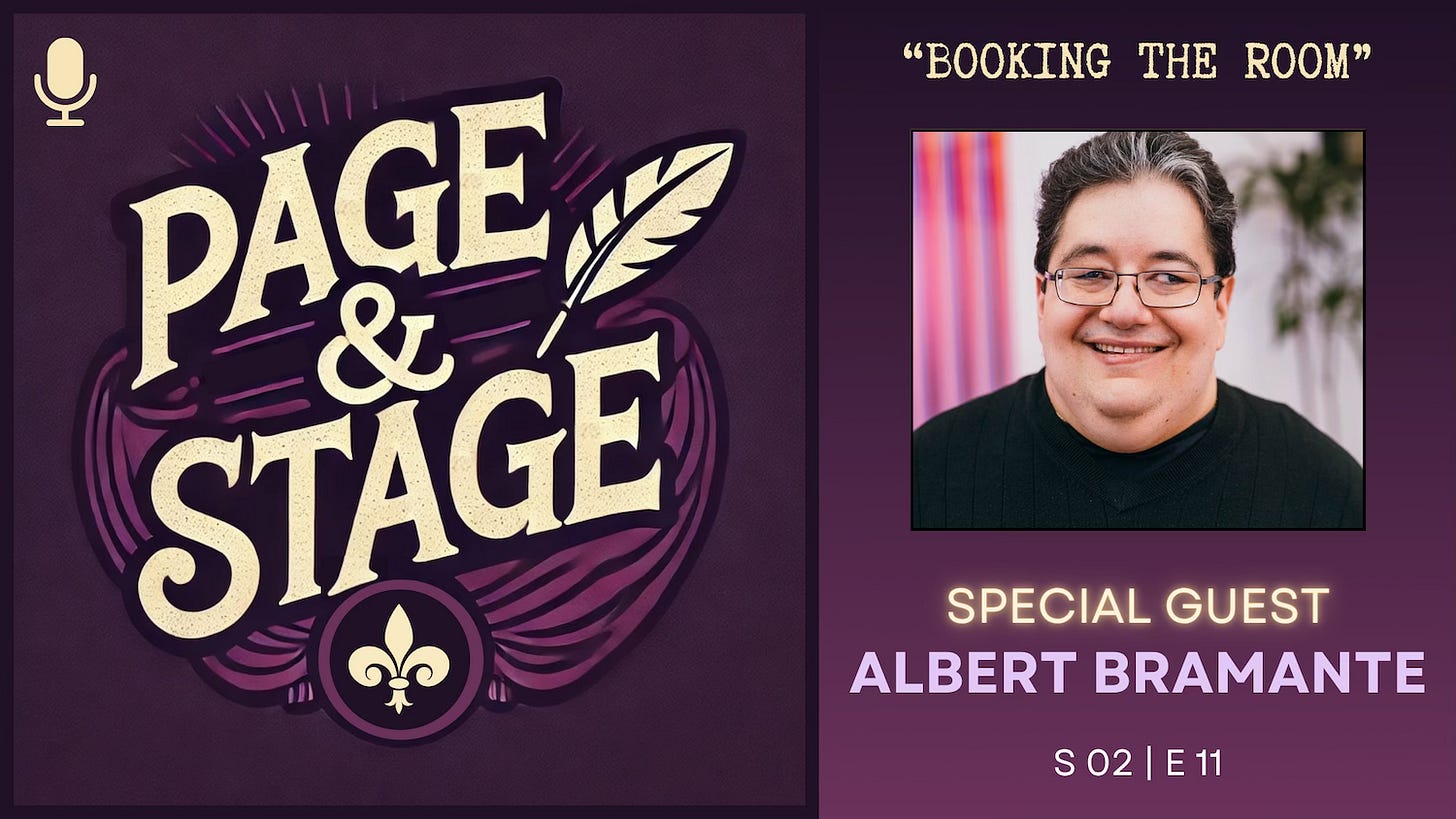Proofreading pain
Tips, tricks, inspiration, and encouragement for storytellers of all stripes
Greetings from Sarasota—
Although by the time many of you read this, I will be winging it up north to Michigan with my beloved Rebecca, her brother Tim, and his daughter Lucy, who is the cutest little dang niece in the world.
Seriously. In the world.
Lucybear is the one I wrote about a few months ago. She loves playlists and especially loves The Ramones (Hey! Ho! Let’s go!), although now her favorite is Intergalactic by The Beastie Boys.
Watching this almost-three-year-old bop along to the music video and yell out, “They’re wild!” makes everything better.
Today’s storytelling tip, though, is not about three-way, tag-team rapping or music videos inspired by Japanese Kaiju.
It’s about proofreading.
In my Storytellers Bootcamp class yesterday, one of the best proofreading tricks revealed itself in real time.
One of my students, Dennis, was reading his story. I had a hard copy to follow along. At one point, he instinctively added an extra word, a simple “that.”
This “that” was not on the printed page. But as he read, the rhythm of the line demanded the “that.”
After Dennis finished, I shared this observation with the class. I read the line as printed. I read the line as Dennis had instinctively “fixed” it. We took a straw poll. Unanimous agreement: the line was better with “that.”
The takeaway? One of the best ways to proofread your story is to read it aloud. Read it to your dogs. Read it to your most patient friend. You will naturally feel in your mouth where a line is wonky, where a word is missing, where words need to be cut.
Another version of this trick is to have that extraordinarily patient friend read your story aloud to you. Your ear will pick things up that your exhausted, “I’ve been looking at this thing for days/years on the screen/paper” eyes have missed.
Now, of course, you’ll want to do your “on paper” editing. I actually do this on an ipad, using my Apple pencil to red pen the ever-loving snot out of a pdf. It’s still a screen, but it looks totally different. Different size, different angle. I catch so many typos proofing on a pdf.
Printing out your story on paper is also a great idea. Same thing—different look, different feel. Forces your brain out of the ruts it’s dug looking at the words on the screen over and over.
If you really want to force your brain into hard core proofing mode, change the font before you print, or before you export that doc to pdf. By altering the very shape of the letters, you will see your story anew.
If your story is meant to be performed for an audience rather than read on a page, there’s another level of proofreading you can engage: that of your performance.
Give this a whirl: video yourself telling the story.
Then print out the TRANSCRIPT of your recording. Not the text you read from, but the transcript of the words you actually spoke.
Then come at yourself three ways.
First, read that transcript and circle every “um,” “er,” and “uh.” Highlight every wonky part where something feels off.
Second, listen to your recording. Just listen, don’t watch yet. And mark on the transcript again anything that sounds weird or in need of an editorial gussy-up.
(Sidenote: you can also do this with the first tip above, especially if you don’t have any extraordinarily patient friends. Record yourself and listen back!)
Third, watch your recording. Same thing. Mark the points to edit, both in content and delivery.
By then, you’ll know exactly what needs fixin’.
I won’t lie. This’ll be painful at first. You’ll feel mortified. But you’ll get used to it, because as you see this work pay off with more effective versions of your story, you’ll come to be grateful for all the self-created feedback.
No proofreading pain, no storytelling gain.
Daily Inspiration: Meet Jason Cannon (hey! that’s me!)
So this article dropped a few weeks ago. In fact, looking at it closely now, it dropped on my dang birthday!
I did an interview with Voyage Tampa, and they turned it into a slick online feature.
If you’ve got a few extra minutes, you can read all about how I got into theatre and storytelling, and why I do what I do.
Hit that purple button below and learn more than you could ever care to know about what makes me tick.
100 Plays
Don’t forget to check out the most recent episode of 100 PLAYS!
In this episode, I talk confronting stage fright, embracing fear as a creative force, and memorizing long monologues via cassette tape.
You can listen on the Substack App, and all episodes are also available on Apple or Spotify.
Or, if you want to put a face with a voice, you can watch the video version of this podcast over on YouTube.
The Page&Stage Podcast
The next episode of the PAGE&STAGE PODCAST will land in your inboxes on Monday.
Talent agent and author Dr. Albert Bramante joins me to explore the emotional and psychological terrain of the acting world. From his early love of theatre to his PhD research on self-sabotage, Albert shares powerful insights on rejection, resilience, and mental health in the industry. We discuss ethical representation, relationship-building, and how actors can leave lasting impressions. A must-listen for anyone navigating showbiz or chasing creative goals—with practical advice drawn from Albert’s book, RISE ABOVE THE SCRIPT.
You can listen on the Substack App, and all episodes are also available on Apple or Spotify.
And if you want to put faces with voices, the video version will be available over on YouTube.
Thanks as always for reading, and have a great weekend!
Jason “Wild Beastie Boy” Cannon


